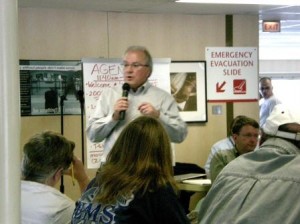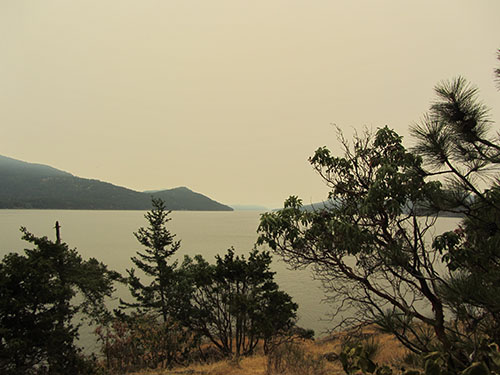Beginning today, June 20, the 34-auto Hiyu will operate on the San Juan inter-island route for approximately one week. The Hiyu the ferry system’s only backup vessel — will replace the 90-auto Sealth on the inter-island route.
In a news release sent yesterday, June 19, from Susan Harris-Huether, WSF staff, it was reported:
The Kaleetan was scheduled to come out of the shipyard and begin service in the San Juan Islands on Sunday, June 21 for the start of the summer sailing schedule. Crews have been working extended hours to complete work on the Kaleetan, however, emerging maintenance needs will likely extend the vessel’s maintenance period for up to one week.
… The Sealth, along with the 144-auto Elwha, 144-auto Yakima and 124-auto Chelan will provide service between Anacortes and the San Juan Islands for the start of the summer sailing schedule. Once the Kaleetan returns to service, it will join the Elwha, Yakima and Chelan, and the Sealth will return to the inter-island route.
Travelers should expect significant vehicle-capacity reductions and are advised to arrive early and allow extra time for long waits at all terminals in the San Juan Islands while the Hiyu serves the inter-island route. WSF also encourages San Juan Islands customers to walk on instead of taking their vehicles.
Interisland ferry meeting
On Thursday, June 11 members of the public met with Washington State Ferries (WSF) staff, state Transportation Commission officials, and Washington State Department of Transportation (WSDOT) Assistant Secretary/Ferries Division David Moseley to discuss recent developments pertaining to the overall ferries situation.

David Moseley, Ferries' head for State Department of Transportation, speaks onboard interisland meeting
The presentation, which addressed a rotating cast of island ferry commuters as it traveled the interisland route, covered the 2009 Legislative directives regarding ferries, the WSF Long Range Plan, vehicle reservations, cost of consultants, tariff increases, federal stimulus funds and negotiations between the U.S. Coast Guard and the ferries’ labor union.
Since that meeting, State Senator Kevin Ranker, a resident of San Juan Island, addressed the national congressional delegation regarding the Coast Guard regulations, which would substantially affect vessel staffing on the Anacortes – San Juan Islands route.
Moseley reported that the WSF long range plan budgeting process looks out to 2030, with 5 new vessels being added between by then. Three 64-car boats and two 144-vehicle boats are planned to be built. The new boats will replace the Evergreen State Class vessels (currently, the Evergreen State, the Klahowya and the Tillikum) and three of the Super Class vessels (current Super Class vessels are the Elwha, Hyak, Yakima and the Kaleetan).
The long-range plan is expected to be finalized by the end of this month.
Ferry fare increases
The last ferry tariff increase was in 2007, when the legislature mandated a “ferry fare freeze” until the directives of that legislative session had been implemented. Those directives included a ridership survey, revision of the WSF long-range plan and proposals for ferry operations’ financing, including a vehicle reservation system.
Now forecast is a 2.5 percent increase in ferry fares in October 2009, and another 2.5 percent increase in October 2010.
Early in July, the fare proposal will be reviewed with the communities-based Ferry Advisory Committees (FAC). The recommendation for the fare increases will also go to the State Transportation Commission which has the responsibility for all state-wide tolling operations.
By mid-July, the Transportation Commission is expected to make its recommendation for the next tariff cycle. The commissions may adopt or modify the proposal and will review comments through August. The increased fares are expected to be take effect on Oct. 11, 2009.
Kathi Ciskowski inquired why $60 million had been spent in the last four years on consultants to the ferry system, a fact reported in a Seattle newspaper earlier this year.
Moseley replied that WSF has reduced its dependence on consultants in the last biennium, specifically by reducing plans for terminal improvements. He explained that in 2005-05, $40 million was spent on consultants for terminal architecture and engineering. Currently, terminal improvements will only be realized through federal funds, he said.
Earlier this month, Moseley reported on the Federal Stimulus Funds, saying “[WSF will receive] $8.4 million in stimulus funds for vessel and terminal preservation projects.
“The federal government has set aside an additional $5 million for WSF vessel preservation and $950,000 for propulsion systems for new vessels through the SAFETEA-LU program. SAFETEA-LU is a 2005 law that represents the largest surface transportation investment in U.S. history.
“We have also applied for funding to retrofit vessel engines to reduce air pollution ($2.1 million), $7.6 million for projects to make our vessels more energy-efficient, $26 million for replacing the Anacortes terminal, and $9 million to refurbish the Hyak.”
In the last biennium, $12 million was spent on consultations with the Elliott Bay Design Group on vessel design, Moseley said.
Reservation system design planned
During its last session, the Washington State Legislature authorized and directed the pre-design study of a vehicle reservation program, at a cost of $3.7 million. During 2009, the technology and “back office” needs for a reservation system will be studied on a specific route, Moseley said.
The Edmonds-Kingston route down sound was chosen for the study, because it carries the most vehicles of any route in the system and its customer base includes a growing commuter population as well as heavy commercial and recreational traffic.
Reduced costs with a reservation system on this route “would give indications for the future,” Moseley said.
He added that the immediate plans do not call for implementation, but in 2010, WSF will share the study findings and make recommendations to implement reservations.
A reservation system is currently in operation on the Port Townsend – Keystone (Whidbey Island) route, due to the loss of two steel electric ferries in late 2007. The route operates with one 50-vehicle ferry, and is successful, Moseley says, “due to community partnership on both side of the route.”
Ed Sutton, Chair of the San Juans Ferry Advisory Committee (FAC) asked when a reservation system may be employed in the San Juans route.
Mosley described a timeline of implementation in the Edmonds Kingston route in latter 2011, followed by a report in 2013 on how the reservation system was working.
In response to a question, Moseley clarified that, at most, 70 percent of vehicle space on a vessel would be reserved.
USCG crew endurance requirements
During the public comment portion of the onboard meeting, questions were asked about negotiation regarding the U.S. Coast Guard (USCG) crew endurance program. I would like to provide some background and then a brief update as to where we are in the process.
In August 2008, the USCG sent WSF a directive to amend its crewing schedules to meet federal crew endurance guidelines that required no more than 12 hours work in 24 hours. The ruling must be enforced by September 2009, according to the directive.
“In the last number of years, a variance [has been allowed] in some routes because of their remote location and the difficulty in staffing,” Moselely said.
Strict enforcement of the Coast Guard directive has implications for the San Juans’ route in that crews that overnight on San Juan Island after the latest ferry, and then crew the next day on the run back to Anacortes, by necessity work longer than a 12-hour shift.
“It’s not possible to overnight a boat in Friday Harbor and not have staff layover… so it creates a scheduling issue,” Moseley said.
He said that WSF has been working with the bargaining units and “is hopeful that we will achieve an agreement that will provide a more flexible schedule.
“This issue must be resolved in the very near future, so we may incorporate any changes into the fall sailing schedule,” Moseley had said earlier.
Ranker negotiates with Congress and Coast Guard
Meanwhile, in a statement released earlier this week by the Washington State Senate Democrats, it was reported:
Citing the adverse impacts to commuters and the working families of the San Juan Islands, State Senator Kevin Ranker, D-San Juan Islands, met with several members of Congress in Washington D.C. and followed-up with letters urging them to reconsider a Coast Guard directive that changes the way Washington State Ferries has operated the San Juan Route for years.
“I fear this new directive, though well intentioned, will unleash many negative impacts on the quality of ferry service not only to the passengers of the San Juan route, but ferry routes all across Puget Sound,” Ranker said.
Washington State Ferries redesigned the fall sailing schedule to accommodate the Coast Guard directive, which prohibits touring watches. Touring watches, where crews work two shifts with an on-board rest in between, have been an integral part of ferry service for the San Juan Islands. Shifting to a schedule without touring watches is intended to decrease crew stress and fatigue, but carries with it other costs.
By not using touring watches, which allows for more boats more often on the San Juan route, the new schedule must accommodate ferries no longer being moored in Friday Harbor overnight, which will decrease the availability of ferries. The diminished capacity will greater affect Eastbound traffic, impacting those who commute to jobs on the mainland.
“I’m hoping we can work together with the Coast Guard, WSF, and our congressional delegation to ensure crew and passenger safety, as well as providing the service levels to sustain the needs of our ferry-dependent communities,” Ranker said.






